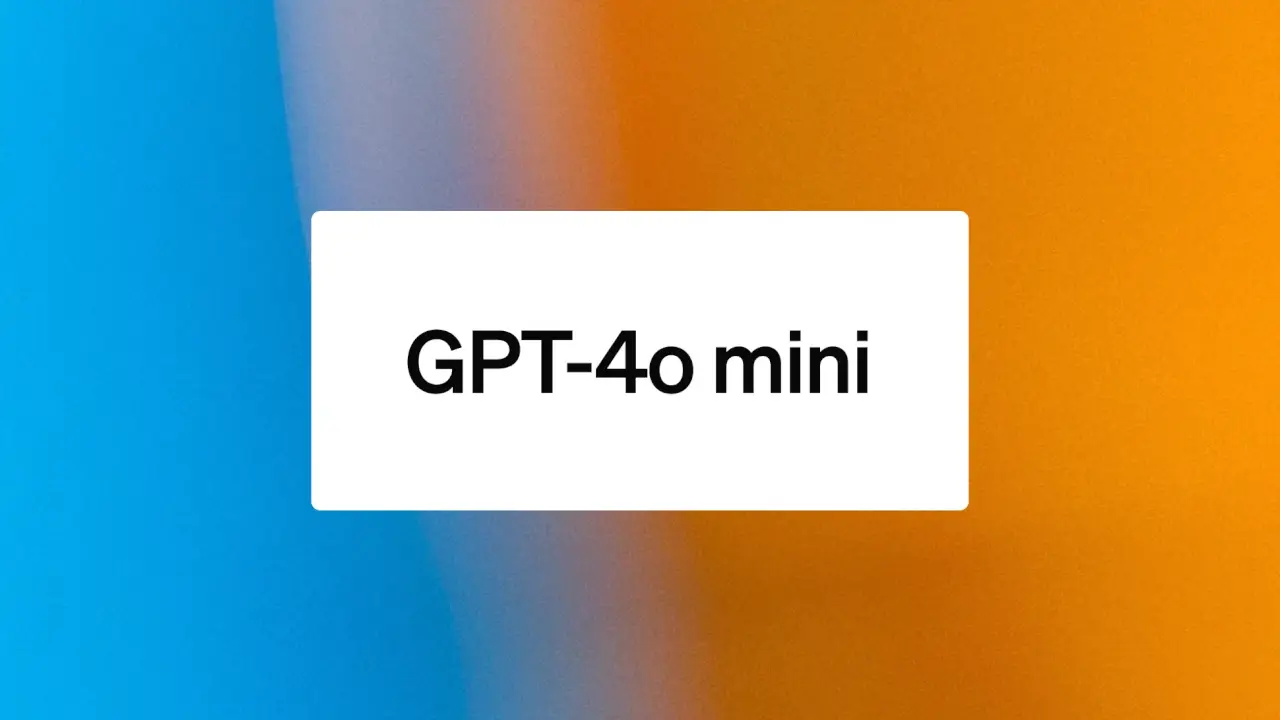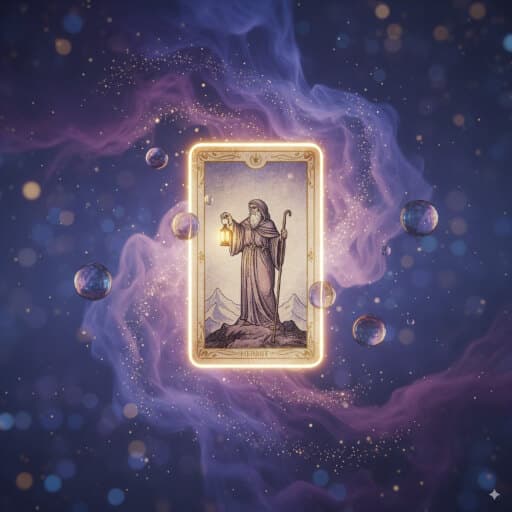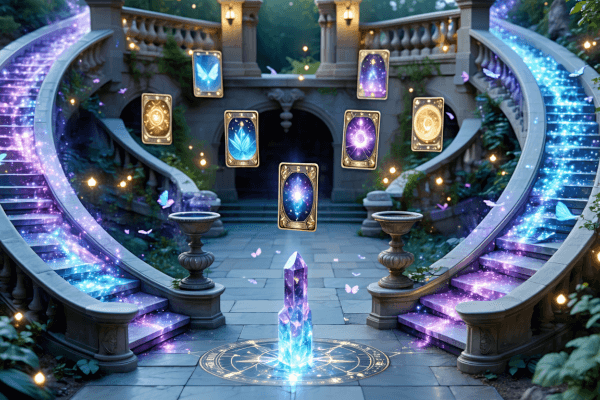Is AI Tarot Accurate? A Deep Analysis of AI Tarot in 2025
An in-depth exploration of the accuracy and limitations of AI Tarot. This article provides a comprehensive analysis of how AI Tarot works.

The Rise and Popularity of AI Tarot
In this digital age, technology is transforming our way of life at an unprecedented pace. In recent years, a new form of divination has quietly emerged—AI Tarot, such as the recently popular Tarotap. This product, which combines ancient wisdom with modern technology, is attracting increasing curiosity and attention.
The emergence of AI Tarot is not just a technological innovation but also a cultural phenomenon. Its popularity is reflected in the following aspects:
- Convenience: Users can obtain Tarot readings anytime, anywhere through smart devices without needing to book a human Tarot reader.
- Low Barrier to Entry: Compared to traditional Tarot, AI Tarot lowers the learning threshold, allowing more people to access this ancient art.
- Privacy Protection: Some people may prefer confiding in AI rather than a real person due to privacy concerns.
- 24/7 Availability: AI Tarot is not limited by time and can provide round-the-clock service.
- Cost-Effectiveness: Compared to human Tarot readings, AI Tarot is usually more affordable, and some are even free.
The rapid adoption of this new technology inevitably raises a key question: How accurate is AI Tarot?
Key Questions This Article Will Explore
To comprehensively assess the accuracy of AI Tarot, this article will delve into the following core questions:
- How does AI Tarot work?
- What are the advantages and limitations of AI Tarot compared to traditional human Tarot?
- What factors affect the accuracy of AI Tarot?
- How should AI Tarot be used correctly?
- What is the future development trend of AI Tarot?
By exploring these questions, we aim to provide readers with a comprehensive and objective perspective, helping everyone better understand and utilize this emerging technology. Whether you are a Tarot enthusiast, a tech lover, or simply curious about divination culture, this article will offer valuable insights.
Introduction to AI Tarot
Before diving into the accuracy of AI Tarot, we first need to understand what AI Tarot is and how it differs from traditional Tarot divination.
What is AI Tarot?
AI Tarot is a modern form of divination that combines artificial intelligence technology with traditional Tarot knowledge. It uses machine learning algorithms and natural language processing to simulate the card-reading process of human Tarot readers, providing users with Tarot interpretations and life advice.
Key features include:
- Digital Interface: Usually presented as a mobile app or webpage, allowing users to draw cards and receive interpretations online.
- Instant Feedback: The system can generate detailed Tarot readings within seconds.
- Data-Driven: Utilizes vast historical data and Tarot knowledge bases to continuously improve interpretation accuracy.
- Personalized Experience: Some AI Tarot systems can offer more personalized readings based on user history and feedback.
Differences Between AI Tarot and Traditional Tarot
While both AI Tarot and traditional Tarot aim to provide guidance and insights, they differ significantly in several aspects:
-
Interpreter:
- Traditional Tarot: Interpreted by experienced human Tarot readers.
- AI Tarot: Interpretations are generated by AI algorithms.
-
Interaction Method:
- Traditional Tarot: Typically conducted face-to-face or via phone/video, involving direct human interaction.
- AI Tarot: Conducted through a digital interface, lacking direct human communication.
-
Interpretation Speed:
- Traditional Tarot: The reading process may take 30 minutes to an hour or longer.
- AI Tarot: Generates interpretations within seconds.
-
Personalization:
- Traditional Tarot: Tarot readers can adjust interpretations in real-time based on the querent's reactions and energy.
- AI Tarot: The level of personalization depends on the complexity of the algorithm, often lacking the flexibility of human readers.
-
Intuition and Energy Sensing:
- Traditional Tarot: Readers can use their intuition and energy perception to supplement card interpretations.
- AI Tarot: Lacks this intuitive and energy-sensing capability.
-
Cost and Accessibility:
- Traditional Tarot: Usually requires appointments and is more expensive.
- AI Tarot: Available anytime, often at a lower cost or for free.
-
Learning and Improvement:
- Traditional Tarot: Readers improve their skills through experience and continuous learning.
- AI Tarot: Improves interpretation quality by updating algorithms and expanding databases.
Although AI Tarot may not fully replace the depth and flexibility of traditional Tarot readings, its convenience and accessibility make it a powerful supplement for Tarot enthusiasts and beginners. Understanding these differences helps us better evaluate the accuracy and appropriate use cases for AI Tarot.
How AI Tarot Works
To understand the accuracy of AI Tarot, we must explore the technical principles behind it. AI Tarot systems primarily rely on advanced machine learning algorithms, natural language processing (NLP) techniques, and extensive databases with complex interpretation algorithms.
Machine Learning and NLP in AI Tarot
-
Machine Learning Models:
- Deep Learning Networks: AI Tarot systems often use deep neural networks, such as Recurrent Neural Networks (RNNs) or Transformer models, to understand and generate Tarot interpretations.
- Transfer Learning: Leverages pre-trained language models (e.g., BERT or GPT) fine-tuned with Tarot-specific data to improve interpretation accuracy and relevance.
-
Natural Language Processing (NLP) Techniques:
- Semantic Understanding: Uses advanced NLP to understand the context and emotional tone of user queries, ensuring generated interpretations are highly relevant.
- Entity Recognition: Identifies key entities (e.g., people, events, emotions) in questions to better match relevant Tarot card meanings.
- Sentiment Analysis: Analyzes the emotional tone of user queries to adjust the tone and content of interpretations, making them more personalized.
-
Multimodal Learning:
- Combines text and image information to learn the complex relationships between Tarot card imagery and their symbolic meanings, simulating the visual-semantic association process of human Tarot readers.
How Databases and Algorithms Generate Interpretations
-
Knowledge Graph Construction:
- Builds complex knowledge graphs containing multidimensional information such as Tarot card meanings, symbolism, and astrology.
- Uses Graph Neural Networks (GNNs) to reason over the knowledge graph, generating more coherent and insightful interpretations.
-
Probabilistic Models and Bayesian Inference:
- Uses Bayesian networks to represent relationships and conditional probabilities between Tarot cards.
- Calculates the most likely interpretation paths based on drawn card combinations, simulating the intuitive reasoning process of human Tarot readers.
-
Context-Aware Generation Algorithms:
- Employs attention mechanisms and context encoding to ensure generated interpretations remain coherent and relevant.
- Uses advanced decoding strategies like beam search to select the optimal interpretation path from multiple possibilities.
-
Personalized Recommendation Systems:
- Utilizes collaborative filtering and content-based recommendation algorithms to dynamically adjust interpretation styles and content based on user history and feedback.
- Applies reinforcement learning to continuously optimize recommendation strategies through long-term user interactions.
-
Interpretation Quality Control:
- Implements multi-stage quality checks, including grammar correctness, content consistency, and ethical review.
- Uses Generative Adversarial Networks (GANs) to produce more natural and human-like interpretation text.
-
Real-Time Learning and Adaptation:
- Deploys online learning algorithms, enabling the AI system to learn from each interaction and continuously improve interpretation quality.
- Uses federated learning to aggregate feedback from multiple users while protecting privacy, optimizing the global model.
Through these advanced technologies and algorithms, AI Tarot systems can simulate the cognitive processes of human Tarot readers, generating deep and personalized Tarot interpretations. However, it's important to note that despite these technological advancements, AI Tarot cannot fully replicate the intuition and emotional connection of human Tarot readers. Understanding this is crucial for accurately assessing the strengths and limitations of AI Tarot.
Advantages of AI Tarot
Although AI Tarot differs from traditional Tarot readings, it offers several unique advantages. These benefits not only make Tarot more accessible but also provide features that traditional methods may struggle to match.
Convenience and Accessibility
-
24/7 Availability:
- AI Tarot is not constrained by time, allowing users to access readings anytime, even during late hours or emergencies.
- No appointments are needed, eliminating wait times and providing instant psychological support and guidance.
-
Location Independence:
- With just an internet-connected device, users can access Tarot services from anywhere in the world.
- Particularly beneficial for those living in remote areas or unable to easily find human Tarot readers.
-
Multilingual Support:
- Advanced AI Tarot systems can offer services in multiple languages, breaking down language barriers.
- Users can interact in their preferred language, improving comprehension accuracy.
-
Cost-Effectiveness:
- Compared to traditional Tarot services, AI Tarot is generally more affordable, with some options being free.
- Reduces the financial barrier to Tarot readings, making it accessible to more people.
-
Privacy Protection:
- Users can conduct readings in complete anonymity, without worrying about privacy breaches.
- An ideal choice for those uncomfortable with face-to-face interactions.
Consistency and Objectivity
-
Standardized Interpretations:
- AI Tarot relies on fixed algorithms and databases, providing highly consistent interpretation results.
- Reduces interpretation bias caused by human factors, especially when a Tarot reader is not at their best.
-
Emotion-Free Analysis:
- AI systems are unaffected by emotional fluctuations or personal biases, maintaining an objective and neutral stance.
- Avoids subjective judgments that human Tarot readers might make based on personal experiences or moods.
-
Data-Driven Insights:
- AI Tarot can analyze vast amounts of historical data, offering insights based on statistics and pattern recognition.
- This data-driven approach may reveal subtle connections that human Tarot readers might miss.
-
Continuous Learning and Updates:
- AI systems can continuously optimize and update through machine learning, ensuring interpretations are based on the latest knowledge.
- As data accumulates, the accuracy and relevance of AI Tarot have the potential to improve over time.
-
Repeatability:
- Users can repeat the same reading multiple times, obtaining consistent baseline interpretations to track the development of issues.
- This repeatability helps users objectively examine their situations and decision-making processes.
-
Multidimensional Analysis:
- AI systems can consider multiple factors and data points simultaneously, providing comprehensive and balanced interpretations.
- Quickly integrates knowledge from Tarot card meanings, astrology, numerology, and other fields to offer richer insights.
These advantages make AI Tarot a powerful complement to traditional Tarot readings, especially for users seeking quick, objective feedback. However, it's important to recognize that these strengths do not mean AI Tarot can fully replace traditional Tarot. Each method has its unique value and appropriate use cases.
Limitations of AI Tarot
Despite its strengths, AI Tarot has inherent limitations. Understanding these limitations is crucial for accurately evaluating and using AI Tarot. Below, we explore two major limitations: the lack of human intuition and experience, and the shortcomings in personalization and emotional connection.
Lack of Human Intuition and Experience
-
Absence of Intuitive Insights:
- Human Tarot readers often rely on years of accumulated intuition and a "sixth sense" to interpret cards, which AI cannot replicate.
- AI cannot sense the "energy" in a room or pick up on subtle emotional cues from the querent, which are often important factors in human Tarot readings.
-
Limited Contextual Understanding:
- Despite advancements in NLP, AI still struggles to fully grasp complex life situations and cultural contexts.
- Human Tarot readers can flexibly adapt interpretations to specific cultural or personal backgrounds, while AI remains relatively rigid.
-
Lack of Creative Interpretation:
- Human Tarot readers can creatively connect card meanings to real-life situations based on rich life experiences.
- AI-generated interpretations may appear formulaic, lacking the unique creative connections made by human readers.
-
Difficulty Handling Ambiguity:
- Tarot readings often involve ambiguity and multiple meanings, which human Tarot readers can skillfully navigate.
- AI systems tend to provide definitive answers, potentially missing the nuanced aspects of Tarot interpretations.
-
Limited Growth Through Experience:
- Human Tarot readers grow and deepen their understanding of Tarot through each reading.
- While AI can improve through machine learning, it lacks the profound personal growth and insights gained by human readers.
Shortcomings in Personalization and Emotional Connection
-
Lack of Emotional Resonance:
- Human Tarot readers can establish emotional connections with querents, offering psychological support and comfort.
- AI cannot truly understand or feel human emotions, making it difficult to provide genuine emotional support.
-
Limited Personalized Interaction:
- While AI can offer some level of personalization based on user data, it falls short of the nuanced interactions provided by human Tarot readers.
- Human readers can adjust their interpretations based on subtle cues during conversations, whereas AI lacks this flexibility.
-
Inability to Build Long-Term Relationships:
- Many people value the long-term relationships they build with a trusted Tarot reader, which deepen understanding and trust.
- AI Tarot cannot provide this kind of ongoing personal relationship and deep understanding.
-
Lack of Genuine Empathy:
- While AI can simulate empathetic language, it cannot truly feel or understand human pain, joy, or confusion.
- The genuine care and understanding offered by human Tarot readers are often key reasons why people seek Tarot guidance.
-
Difficulty Adapting to Unconventional Situations:
- Human Tarot readers can flexibly handle unexpected or unconventional reading scenarios.
- AI systems may struggle to respond appropriately to situations outside their training scope.
-
Inability to Provide True Spiritual Guidance:
- For many, Tarot readings are not just about advice but also a spiritual or soulful experience.
- AI Tarot cannot provide this deep spiritual connection and guidance.
Understanding these limitations is crucial for using AI Tarot correctly. While AI Tarot excels in certain areas, it cannot fully replace the depth, flexibility, and human touch of traditional Tarot readings. When choosing between AI Tarot and traditional Tarot, users should make informed decisions based on their needs and expectations.
Evaluating the Accuracy of AI Tarot
Assessing the accuracy of AI Tarot is a complex and challenging task. It involves not only scientific research and user feedback but also consideration of various factors that influence accuracy. Let's explore this issue in depth.
Scientific Research and User Feedback
Limitations of Academic Research
Currently, rigorous scientific research on the accuracy of AI Tarot is relatively limited. This is largely due to the subjective and hard-to-quantify nature of Tarot readings. However, some preliminary studies have begun exploring this field:
- Certain studies compare the consistency of interpretations between AI Tarot and human Tarot readers, finding that AI systems achieve high accuracy in basic card meaning interpretations.
- Other studies focus on user satisfaction, which indirectly reflects the perceived accuracy of AI Tarot.
The Double-Edged Sword of User Feedback
User feedback is an important metric for evaluating AI Tarot accuracy, but it also presents challenges:
Advantages:
- Directly reflects user experience and perceived accuracy.
- Allows for the collection of large datasets, facilitating statistical analysis.
- Helps identify strengths and weaknesses of AI systems.
Disadvantages:
- May be influenced by confirmation bias.
- Users may lack the expertise to evaluate Tarot accuracy.
- Short-term feedback may not reflect long-term accuracy.
Comprehensive Evaluation Methods
To more comprehensively assess AI Tarot accuracy, researchers are developing integrated evaluation methods:
- Combining quantitative and qualitative analysis.
- Conducting long-term tracking studies to observe the realization of AI Tarot predictions.
- Comparative analysis of AI Tarot, human Tarot readers, and random predictions.
Factors Affecting Accuracy
The accuracy of AI Tarot is influenced by multiple factors. Understanding these factors helps us better evaluate and improve AI Tarot systems.
Algorithm and Data Quality
The core of AI Tarot lies in its algorithms and training data. High-quality, diverse training datasets are crucial for improving accuracy. At the same time, advanced machine learning algorithms, such as deep learning and NLP, are continuously enhancing AI Tarot performance.
Clarity of User Input
The accuracy of AI Tarot largely depends on the information provided by users. Clear, specific questions often yield more accurate interpretations, while vague or overly broad questions may lead to generic responses.
System Updates and Maintenance
Regular updates and optimization of AI systems are essential for maintaining accuracy. This includes:
- Continuous improvement of algorithms.
- Expansion and updating of databases.
- Adjustments based on user feedback.
Cultural and Language Adaptability
AI Tarot systems need to adapt to different cultural contexts and language habits. A lack of adaptability may result in interpretations that seem inaccurate or irrelevant in certain cultural settings.
Managing User Expectations
User expectations of AI Tarot influence their perception of accuracy. Educating users about the capabilities and limitations of AI Tarot helps set more reasonable expectations, leading to more objective evaluations.
Ethical Considerations
The design of AI Tarot systems must consider ethical factors, such as avoiding harmful advice. While such ethical constraints may affect perceived accuracy in some cases, they are crucial for the long-term reliability and user trust in the system.
In summary, evaluating the accuracy of AI Tarot is a multidimensional process that requires consideration of technical, user experience, cultural, and ethical aspects. As technology advances and research deepens, we can expect a more comprehensive and objective understanding of AI Tarot accuracy.
Proper Use and Future Outlook of AI Tarot
As AI Tarot becomes more widespread, understanding how to use it correctly and its relationship with traditional Tarot is increasingly important. At the same time, we need to look ahead to the future development of AI Tarot, considering potential technological advancements and ethical issues.
Proper Use of AI Tarot
Realistic Expectations and Critical Thinking
When using AI Tarot, maintaining realistic expectations is crucial. Users should recognize that AI Tarot is an algorithm-based tool, not a magical prediction machine. Critical thinking is especially important during use:
- Question and analyze AI-generated advice rather than blindly accepting it.
- Treat AI Tarot interpretations as references, not absolute truths.
- Understand the limitations of AI Tarot, such as its lack of true emotional understanding.
AI Tarot as a Self-Reflection Tool
AI Tarot can be a powerful tool for self-reflection. Users can maximize its value by:
- Using AI Tarot interpretations as starting points for deeper exploration of their feelings and thoughts.
- Combining AI Tarot advice with personal experiences and knowledge to derive more meaningful insights.
- Regularly using AI Tarot to track personal growth and changes, without becoming overly reliant on it.
AI Tarot vs. Human Tarot Readers
Strengths and Weaknesses of Each
AI Tarot and human Tarot readers each have their own strengths:
AI Tarot Strengths:
- 24/7 availability.
- Cost-effectiveness.
- Strong consistency in interpretations.
Human Tarot Reader Strengths:
- Providing emotional support and resonance.
- Flexibility in handling complex situations.
- Offering personalized and in-depth insights.
Complementarity
AI Tarot and human Tarot readers can complement each other:
- Users can start with AI Tarot for initial insights, then consult a human Tarot reader for deeper interpretations.
- AI Tarot can serve as a daily self-reflection tool, while important decisions can be guided by human Tarot readers.
- Tarot learners can use AI Tarot to practice basic interpretations while learning advanced techniques from human mentors.
Future Development of AI Tarot
Potential Impact of Technological Advancements on Accuracy
As technology continues to evolve, the accuracy of AI Tarot is expected to improve further:
- More advanced NLP technologies may enhance AI's ability to understand complex questions.
- Quantum computing could enable deeper pattern recognition and prediction.
- Augmented reality (AR) technology may bring more immersive experiences to AI Tarot.
Ethical Considerations and Regulatory Issues
The development of AI Tarot also brings a series of ethical and regulatory challenges:
- Ensuring AI Tarot does not provide harmful or misleading advice.
- The importance of protecting user data privacy.
- The potential need for industry standards and regulatory frameworks to ensure the reliability and safety of AI Tarot.
Conclusion
The Value and Limitations of AI Tarot
As a modern divination tool, AI Tarot offers significant value: it provides convenient, consistent Tarot experiences and can serve as an effective self-reflection tool. However, we must also recognize its limitations, such as the lack of true emotional understanding and intuitive insights.
A Rational Perspective on AI Tarot
We encourage readers to approach AI Tarot with an open yet rational mindset:
- Appreciate the convenience and new possibilities it brings.
- Understand and accept its limitations.
- View AI Tarot as a complement to traditional Tarot, not a replacement.
- Maintain critical thinking when using AI Tarot, combining its advice with personal judgment.
As technology advances and our understanding of AI Tarot deepens, it has the potential to become an increasingly powerful and valuable tool. Ultimately, its true value depends on how wisely we use it, integrating it with human wisdom and intuition to gain genuine insights and guidance.










